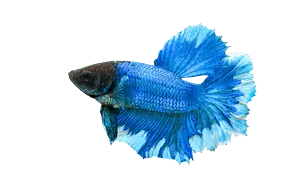Bettas are popular because of their beautiful tails and vibrant colors.
These stunning fish are usually classified by their distinct tail shapes, color varieties, and scale patterns.
With so many types of betta fish, deciding which is right for you may be overwhelming.
Keep reading to learn more about the common tail types, color variations, and patterns found in betta fish.
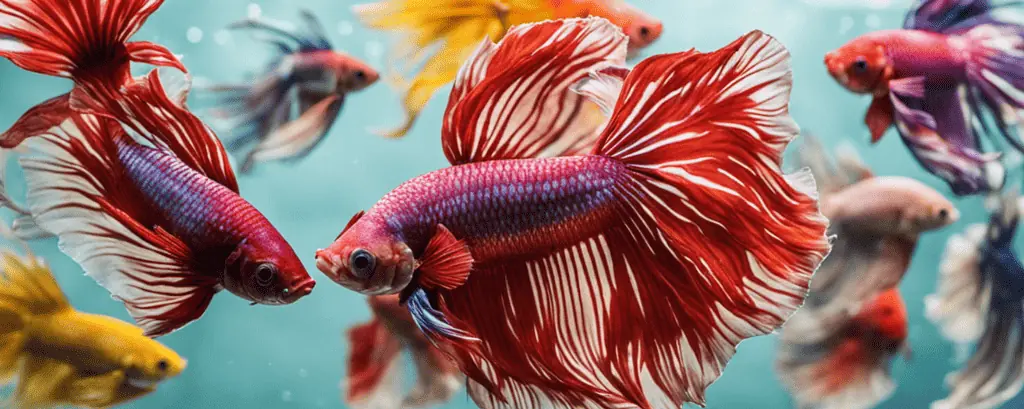
Table of Contents
Betta Fish Type by Tails
Long, flowing tails are a distinguishing characteristic in betta fish.
Wild bettas have short tails, but different tail shapes were developed through selective breeding.
The tail shape of a betta gives clues to its genetics and determines how much care the fish needs.
Female bettas do not have long, flowy fins or tails, but males do. The only exception is the male plakat variety, which is often confused for a female.
#1 Veil Tail
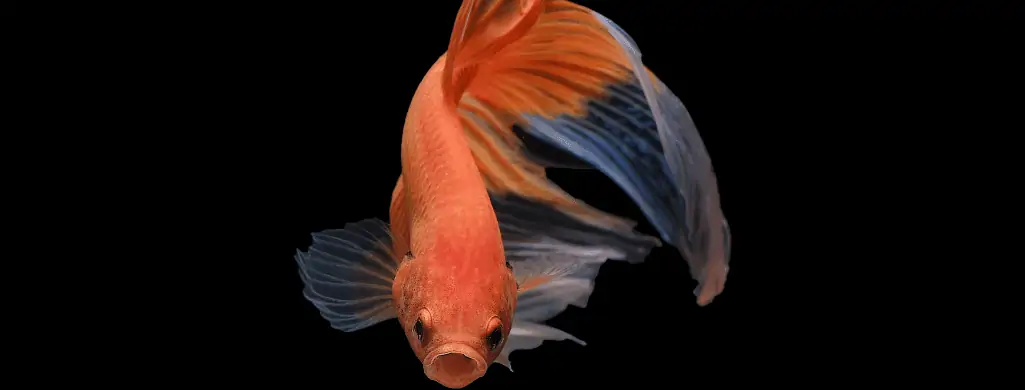
Veil-tail bettas are the most common in pet stores because they have a dominant trait.
The tail is long and swoops down, resembling a veil when the fish swims.
Veil tails are not good swimmers but are less aggressive than other betta varieties.
#2 Crowntail

Crowntail bettas have spiky tails and fins where the webbing stops about one-third to halfway up.
If the webbing extends more than two-thirds up the tail or fins, the betta is not a crowntail.
Crowntails are prone to disease and injury, so water parameters must be consistent.
The crowntail is a better swimmer than the veil tail but displays more aggressive behavior.
#3 Combtail
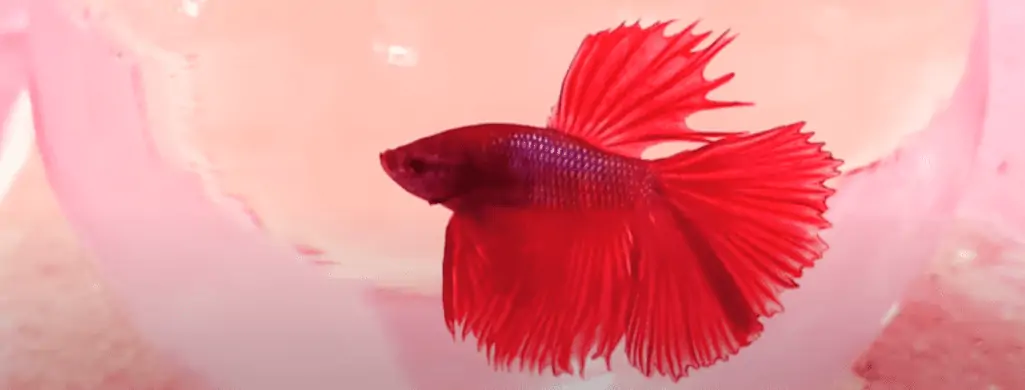
Combtail bettas have a tail and fins similar to the crowntail, but the webbing extends more than two-thirds up.
The tail spreads like a fan, but not more than 180° degrees.
Combtails get their name because the tail resembles the comb of a rooster.
#4 Double Tail
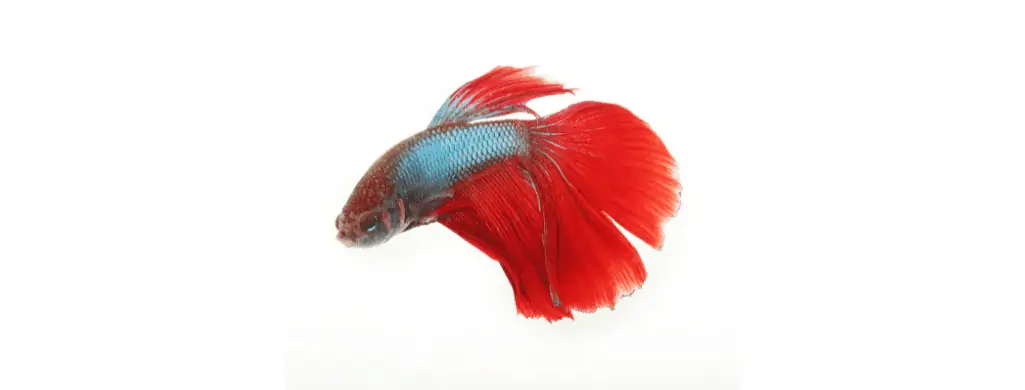
Double-tail bettas are unique because they have two distinct caudal fins.
The tail is not split, as each caudal fin has a separate base. Both tails are not always identical in length.
Double tails result from a genetic mutation and may have any shape.
A double-tail betta has longer dorsal and anal fins and a shorter body.
Double-tail bettas are more likely to get swim bladder disease, but the cause is unknown.
#5 Spade Tail

Spade tail bettas have a rounded tail, but it tapers to a point like a spade.
The pointed tail does not compromise the betta’s ability to swim.
Finding a spade-tail betta may be challenging because they are rare due to recessive genes.
#6 Halfmoon
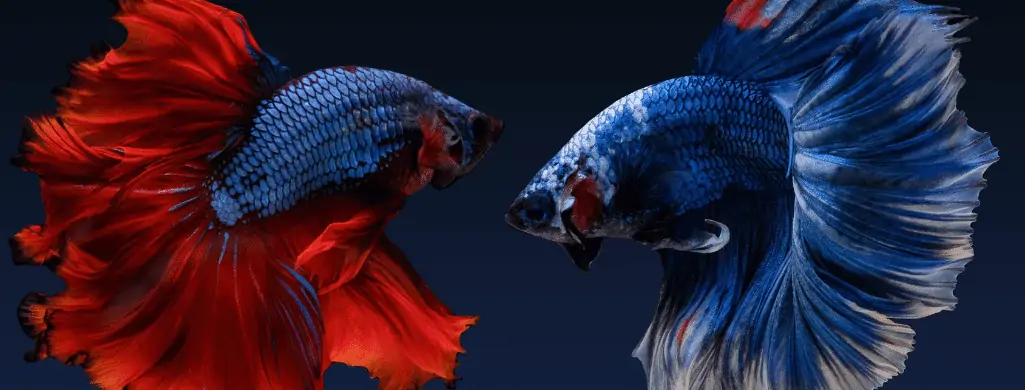
Halfmoon bettas have a crescent-shaped tail, which spans 180° degrees.
The dorsal fins are rounded, and the anal fins are long and hang straight down.
All three fins on a halfmoon betta overlap.
Halfmoon bettas are available in most pet stores but are not as common as the veil tail or crowntail.
The halfmoon betta is likelier to suffer from torn fins and tends to have a more aggressive personality.
#7 Over Halfmoon

Over halfmoon bettas are similar to regular halfmoons, but their tails span more than 180° degrees when spread.
The dorsal and anal fins of the over halfmoon are like the regular halfmoon.
Over halfmoons are prone to fin tearing and have more aggressive behaviors.
#8 Delta
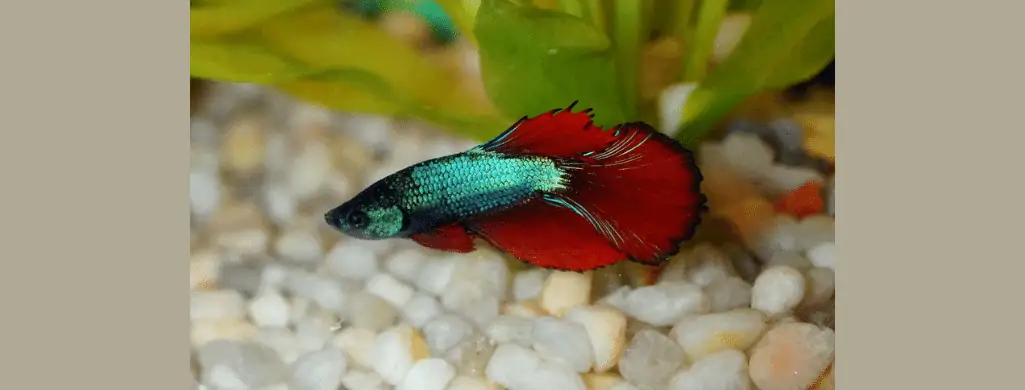
A delta betta has a triangular tail that flares out with a rounded edge.
This betta gets its name because the shape of the tail resembles the Greek letter delta.
Its dorsal and anal fins are long and flowing.
The delta betta was created by crossing a veil tail and a halfmoon.
#9 Super Delta
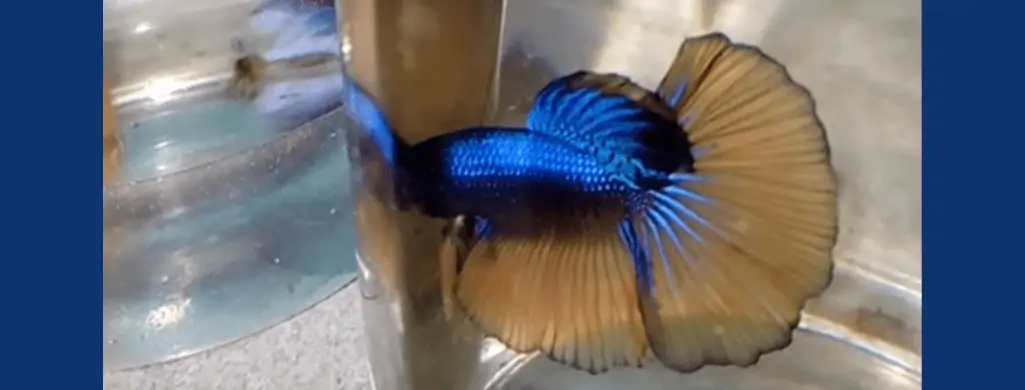
The super delta betta resembles a regular delta, except the tail spans from 120 to 160° degrees when flared.
If the super delta’s tail spans 180° degrees, the betta is a halfmoon.
A super delta’s tail has webbing all the way to the edge, with no fringes or spikes.
#10 Roundtail
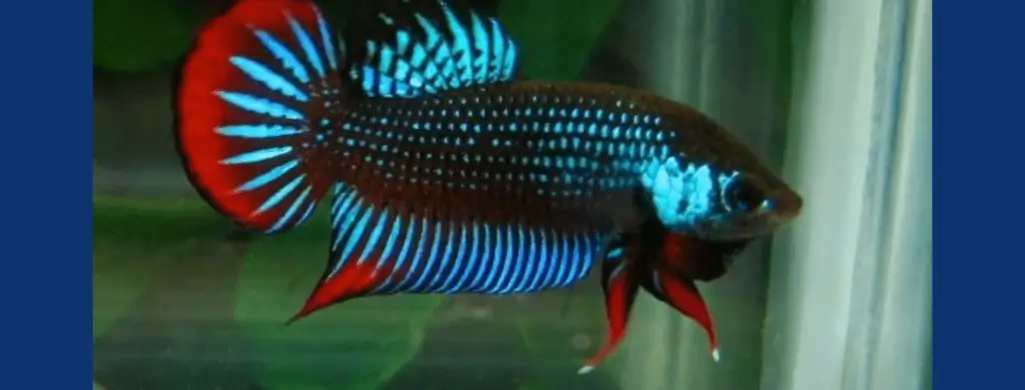
Roundtail betta fish have a single tail with rounded edges. These bettas are also known as fan tails.
The roundtail is often confused with the delta or halfmoon bettas.
Deltas have straighter tail edges compared to roundtails.
Halfmoon bettas have a broad tail shaped like a “D,” while roundtails do not have wide tails.
#11 Half Sun
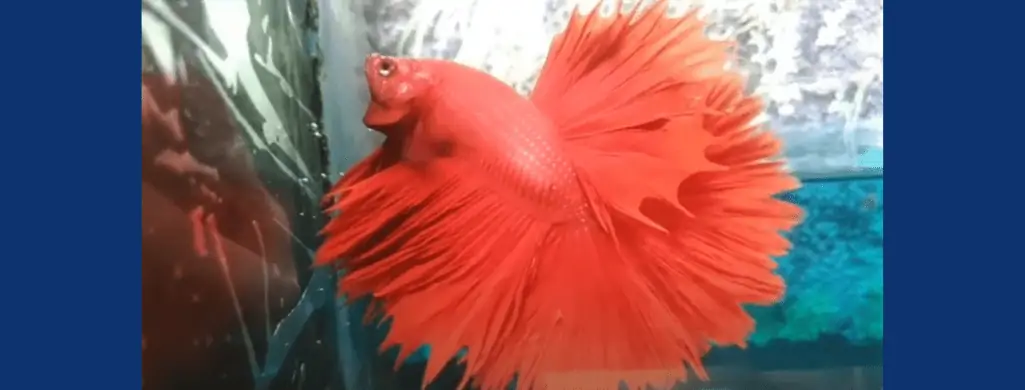
Half sun bettas are the result of breeding halfmoons and crowntails.
The fin fringes extend a bit past the webbing resembling a sun.
A half sun betta’s tail also spreads 180° degrees.
The half sun betta tends to have aggressive behaviors.
#12 Rosetail or Rose Petal

Rosetail betta tails have extra rays and branching with ruffled edges. This causes the tail to fold back in on itself like the petals of a rose.
The massive tail of the rosetail betta makes it difficult for the fish to swim.
A common issue with rosetails is tail biting. It is unknown why rosetails do it, but they frequently bite and chew on their tails.
This tail-biting behavior often causes infection and may result in the loss of the tail.
Sometimes the infection from tail biting is life-threatening.
Rosetail bettas also tend to have more aggressive behaviors since they are bred from halfmoons.
#13 Feather Tail
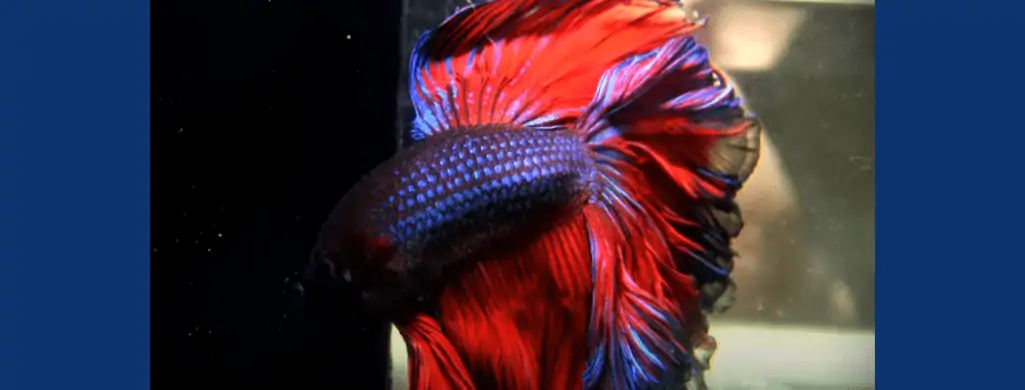
Feather tail bettas have wild tails resembling feathers.
The feather tail’s fins flutter when they swim and are mesmerizing to watch.
Unfortunately, feather tail bettas are susceptible to ragged fins and tail biting.
#14 Plakat or Shortfin
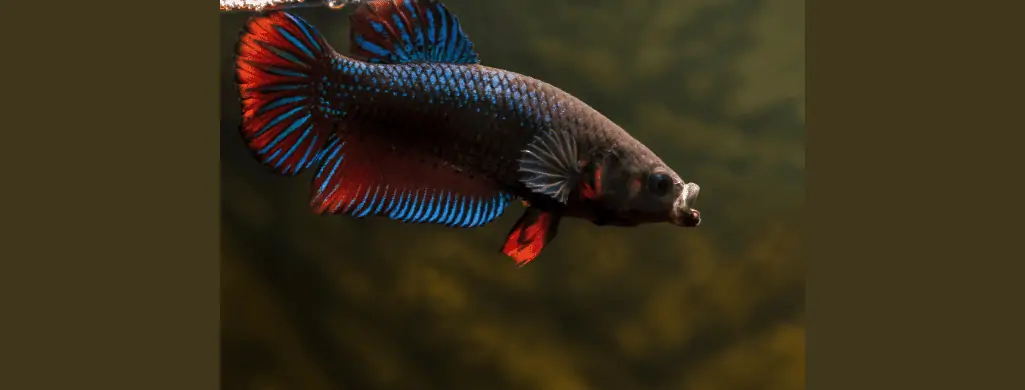
Male plakat bettas are usually mistaken for females because they have short fins.
Plakat bettas have short, rounded tails and are close in appearance to wild bettas.
Without the fancy fins, plakats can swim faster than other betta varieties. They are also excellent jumpers.
There are also halfmoon and crowntail versions of plakats, but the fins are still short.
Plakat bettas are the most aggressive type of betta, much like their wild ancestors.
#15 Dumbo Ear or Elephant Ear

The Dumbo ear, or elephant ear, betta does not get its name from the shape of its tail.
Dumbo ear bettas have large, ruffled pectoral fins on each side of their bodies. These prominent fins resemble elephant ears and give the betta a unique appearance.
The large pectoral fins make swimming difficult for the Dumbo ear betta.
Dumbo ear bettas have a more aggressive nature than other types of bettas.
Betta Fish Type by Color
Betta fish contain only three colors in their pigment cells: red, black, and yellow.
The colors of betta fish rely on the combination of pigments and how deep the pigment cells are.
Wild bettas can brighten their colors when they feel threatened or during mating.
The domestic betta has lost this ability due to selective breeding.
Fortunately, selective breeding also produced the variety of colors domestic bettas are known for.
You can see our dedicated post on betta fish colors here.
#1 Blue Betta
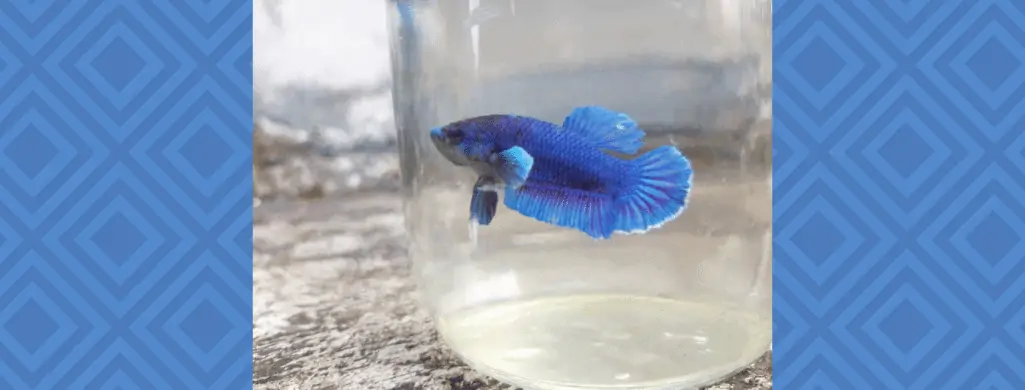
Blue is one of the most common colors in bettas, with three varieties.
The standard blue color is known as blue wash, and it is easy to find bettas with this shade of blue.
Blue mixed with gray is called steel blue.
The brightest blue is called royal blue, and this rich color makes the scales look iridescent.
Royal blue bettas are harder to find than the other blue shades.
I was fortunate enough to have a royal blue betta named Elvis, and believe me when I say this color is stunning in person.
#2 Turquoise Betta

These bettas have a mixture of blue and green pigments, resulting in a bright turquoise color.
The turquoise scales usually have an iridescent sheen, common in blue and green bettas.
Some turquoise bettas may have splotches of red near the head or tail fin area.
#3 Black Orchid Betta
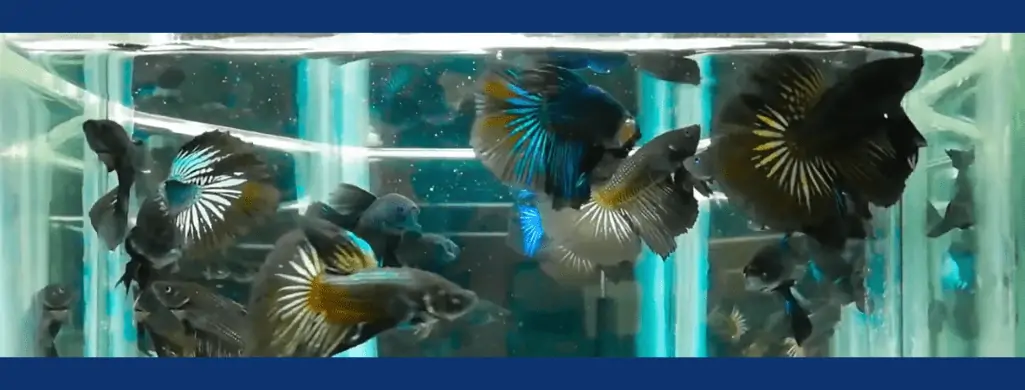
The black orchid betta has a more subdued coloring than other bettas, but it is still beautiful.
Black orchid bettas have black coloring on the fins and body.
The scales may also have an iridescent blue sheen, providing a contrast against the black.
#4 Red Betta

Red is a genetically dominant color in bettas, so it is easy to find.
Bettas in other colors sometimes have a red wash, adding spots of red coloring on the body and fins.
Red is usually a vibrant color in bettas. If your red betta appears pale or washed out, you may need to adjust your tank’s water pH or temperature.
#5 Orange Betta
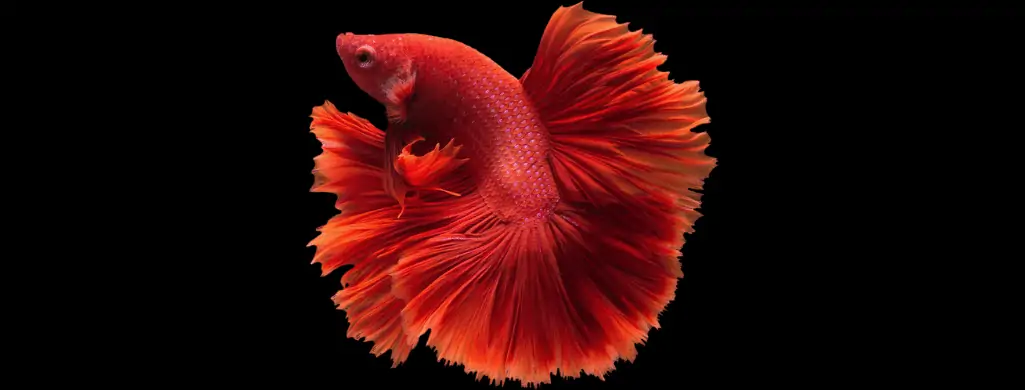
Orange bettas range from bright tangerine to soft coral shades.
You will not see orange bettas as often as red or blue ones, but the color is more common than green or purple.
Orange is most commonly seen on bettas with the koi scale pattern.
#6 White Betta

White may seem boring for bettas, but it makes them stand out in a planted tank.
Do not confuse white bettas with albino bettas. Albino bettas lack any pigment and usually appear dull.
White bettas are much brighter and visually stunning when combined with a showy tail type.
#7 Yellow Betta
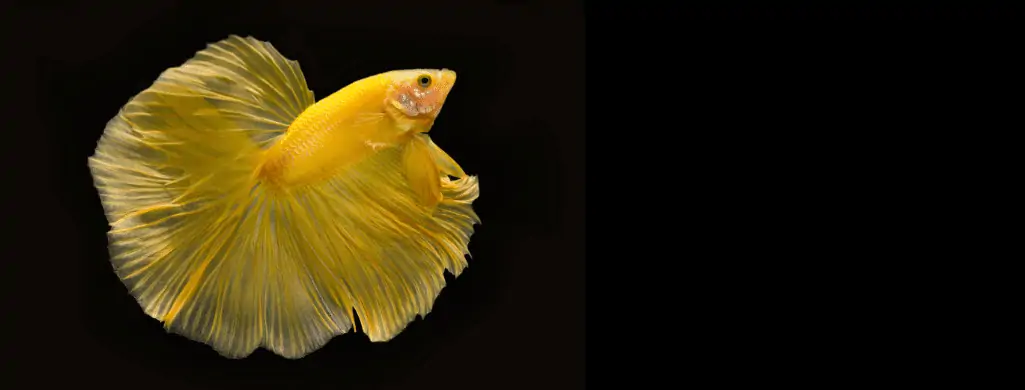
Yellow bettas range from a pastel butter shade to a more vibrant sunshine color.
The yellow coloring is usually present on both the body and fins.
Some yellow bettas have a darker color on the tail edge. These are known as pineapple bettas.
It is not uncommon to see yellow bettas advertised as “non-red.”
Yellow bettas have the same color characteristics as red bettas, without red pigment.
#8 Green Betta
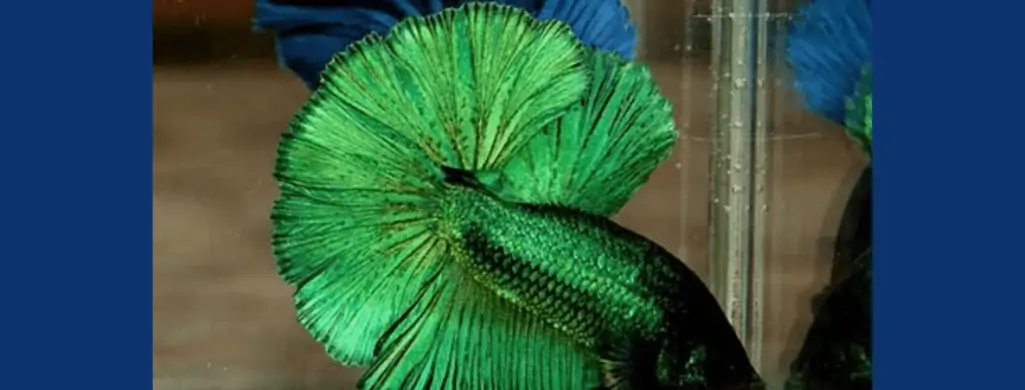
Green bettas are usually a solid color ranging from bright grass green to deep emerald green.
The green color was refined through years of selective breeding.
Green bettas are very rare, and you will likely have to find a reputable breeder to get one.
#9 Purple Betta

Purple is the rarest color in betta fish, so they are not easy to obtain.
The purple coloring ranges from violet to blue, and some copper and black variations exist.
Bettas may also have purple bodies and other colors on the tails and fins.
#10 Pastel Betta

Pastel bettas have similar genetics to cellophane bettas, except they have pigment.
The fins and bodies of pastel bettas are almost translucent.
Pastel bettas come in pale yellow, baby pink, lavender, and seafoam green.
You won’t find pastel bettas in your local pet store, only from specialty breeders.
#11 Pink Betta

Genuine pink bettas are rare, and some of them do not have any pink pigment at all.
For example, albino bettas lack pigment, but their bodies are so pale their organs are visible just beneath the skin. This gives them a pale pink hue.
This phenomenon is also seen in cellophane bettas.
Red bettas may appear pink when they are young or old as their color develops or fades.
When red bettas are sick or stressed, their red color may also fade to pink.
Bettas with the Cambodian scale pattern may also have a pink tint.
Some purple bettas may appear as magenta or Fuschia colored.
#12 Mustard Gas Betta
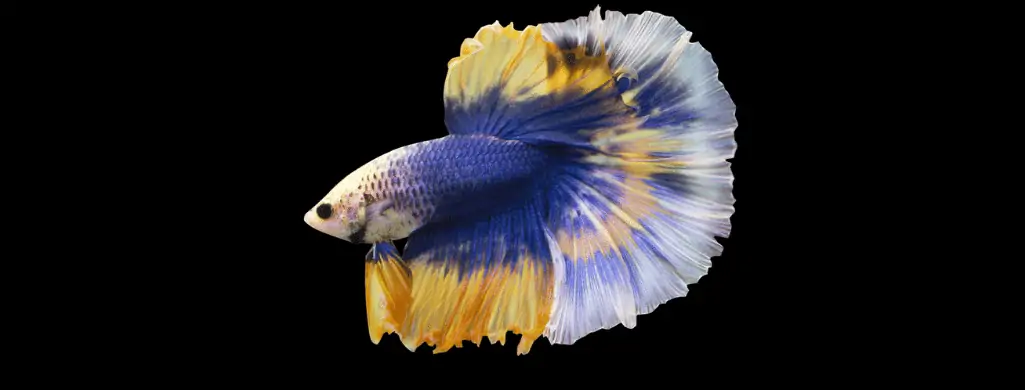
Mustard gas bettas are bi-colored, meaning the body is a different color from the fins and tails.
The body of a mustard gas betta is usually dark blue or green.
A mustard gas betta’s flowing fins and tail range from yellow to orange.
The contrast in colors gives this betta a striking appearance.
#13 Copper Betta
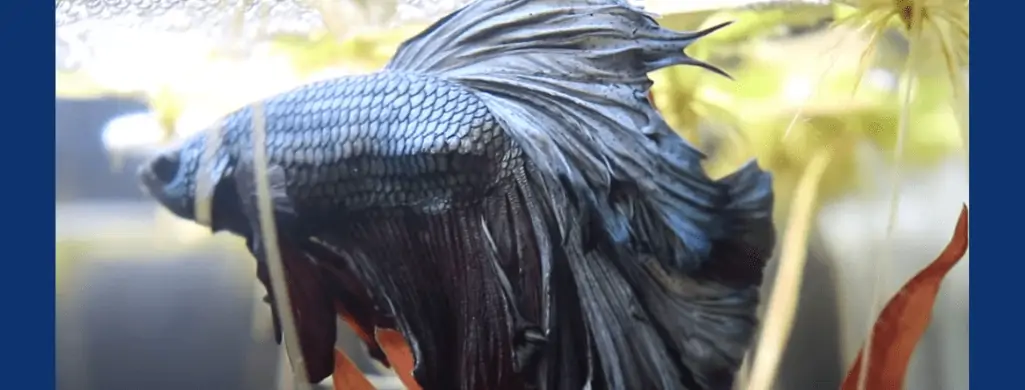
Copper bettas usually have blue, steel blue, or turquoise bodies and fins. They may also be a light tan or pale orange color.
The scales of a copper betta have a metallic sheen like the fish’s namesake.
Copper bettas resemble dragon scale betta varieties.
#14 Chocolate Betta
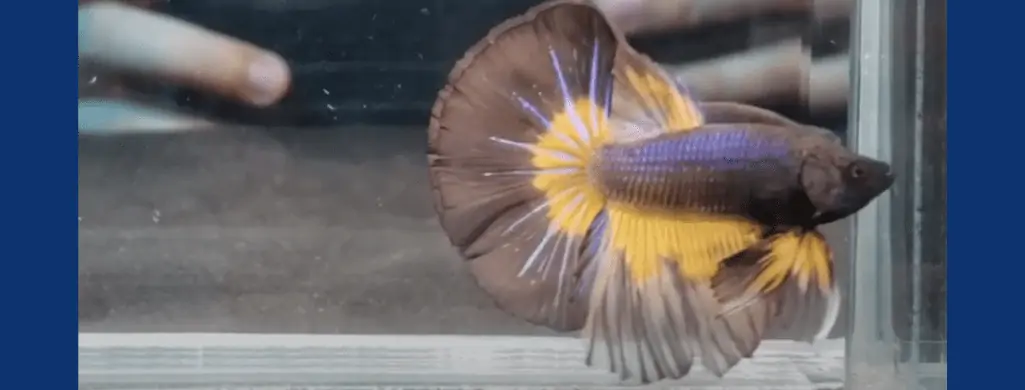
Chocolate bettas are similar to mustard gas bettas, except they have dark brown bodies.
The fins and tail of a chocolate betta are pale or golden yellow.
Chocolate bettas are a very popular and sought-after strain.
#15 Albino Betta
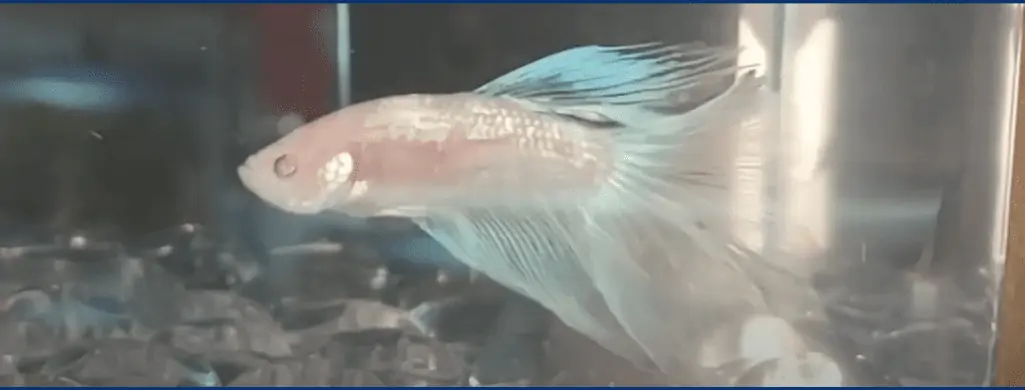
Albino bettas are very rare. They completely lack any pigment, and their eyes are usually red or pink.
Due to the genetics of albinism, albino bettas are prone to blindness and skin cancer.
Albino bettas have shortened lifespans and rarely make it to adulthood.
#16 Clear or Cellophane
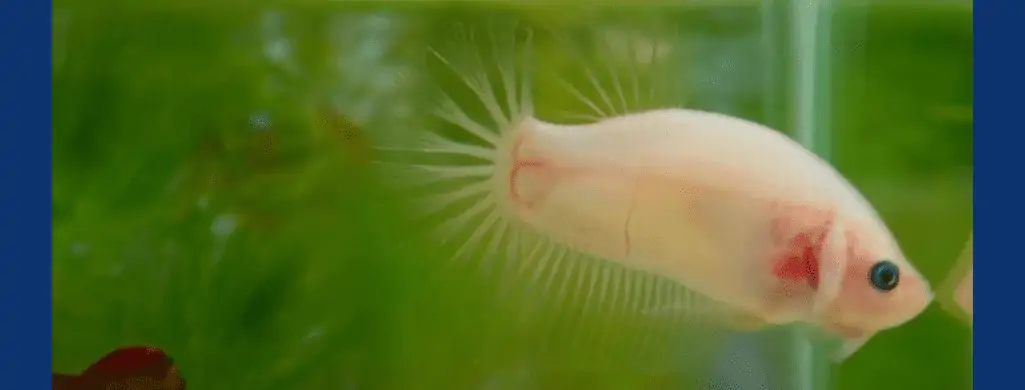
Clear, or cellophane, bettas are often confused with albino bettas because they lack pigment.
Cellophane bettas have translucent skin, and their organs are visible under the surface. This feature often makes the clear bettas appear pink.
The eyes of cellophane bettas are black, and the fins are transparent.
Cellophane bettas do not suffer from many health problems albino bettas have, but they are prone to skin cancer.
Keep a cellophane betta tank away from the sun.
Betta Fish Type by Pattern
Along with distinct tail shapes and colors, betta fish come in various patterns.
These patterns are determined by pigment cells and iridocytes.
Iridocytes are similar to pigment cells, giving betta scales their metallic sheen.
In varying degrees, the combination of iridocytes and pigment cells creates a wide range of color patterns in betta fish.
#1 Cambodian Betta
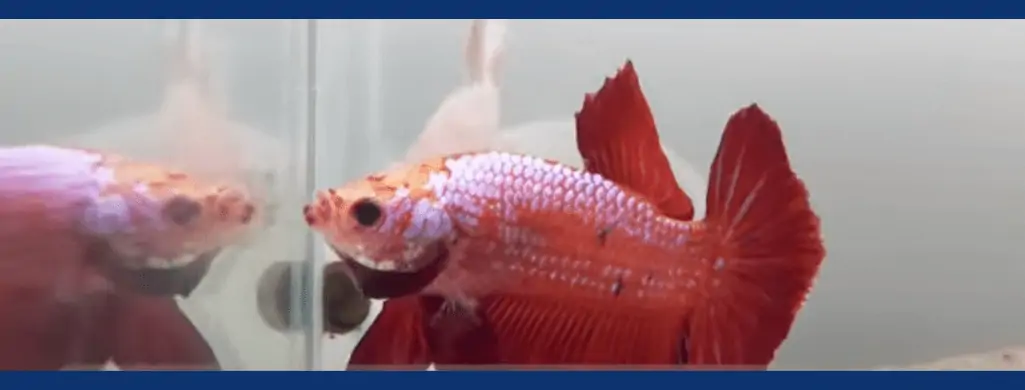
Cambodian bettas are a variation of the bi-color pattern.
The body of a Cambodian betta is pale pink, and the fins are bright red.
Sometimes, the body of a Cambodian betta appears flesh-colored.
The fins may be other color variations, but the body must be pale pink for a betta to be considered a Cambodian.
Cambodian bettas were very popular until breeders started producing more colorful patterns.
As more people become interested in bi-color bettas again, the Cambodian pattern is slowly returning.
Cambodian bettas are still rare, as the gene causing this pattern is a recessive trait.
Some strains of Cambodian bettas develop small black dots on the body. These spots usually do not develop until the betta is 18 months old.
#2 Dragon Scale Betta
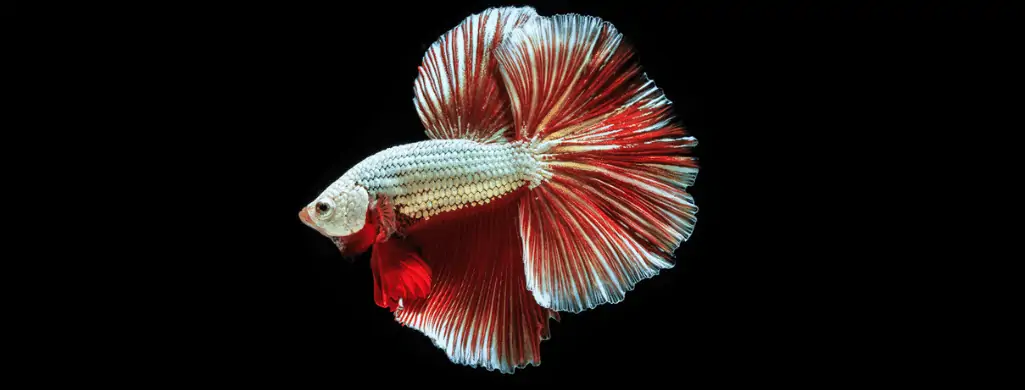
Dragon scale bettas were recently developed, so they are challenging to find.
Years of selective breeding have produced a betta species with large, metallic scales resembling the scales of a lizard.
The metallic sheen is due to the significant presence of iridocyte cells.
Dragon scale bettas have white scales with dark edges, which makes them stand out on the fish’s body. These scales are larger than those in other betta varieties.
The body of a dragon scale betta has bright colors underneath the white scales.
Dragon scale bettas are available in any color or fin variation.
Their body color defines the name of dragon scale bettas.
For instance, a red dragon betta has red skin under the white scales.
The only exception to this rule is blue dragon bettas. Blue dragon bettas are blue over their entire body, including the scales.
Always purchase from a reputable breeder to ensure you get an actual dragon scale betta.
#3 Butterfly Betta
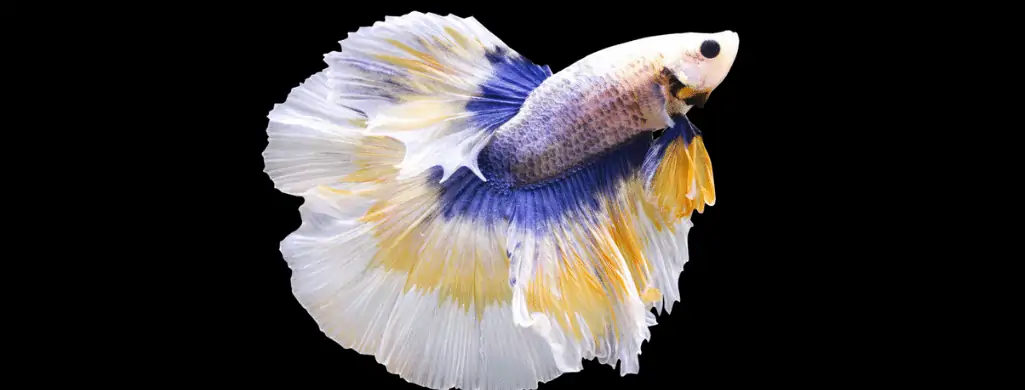
The pattern on a butterfly betta looks like butterfly wings.
A butterfly betta has a solid color on the body, gradually fading to the fins and tail. The outer edges of the fins and tail are usually white.
The anal and dorsal fins sometimes have another color.
Butterfly bettas have vivid colors like red, blue, and yellow. Rare varieties include purple, orange, and green.
Show-quality butterfly bettas have a perfectly split shade halfway on the fins and tail.
Most butterfly betta fish have a halfmoon tail shape.
#4 Marble Betta
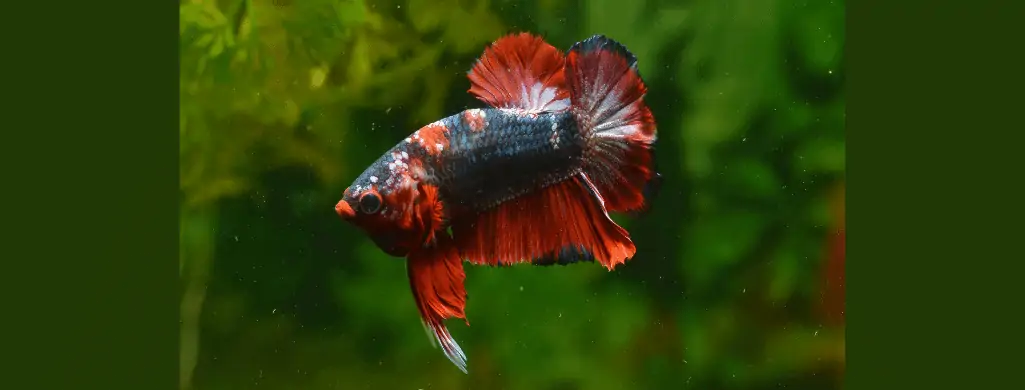
Marble bettas have irregular splotches of color on their bodies.
The splotches are usually white but may be any color. This effect is seen in the koi betta pattern.
A specialized recessive gene causes marbling in bettas in the chromosomes. This gene blocks black pigment, causing the betta to change colors gradually.
The marble betta was created accidentally by a prison inmate named Orville Gulley. He was attempting to develop black bettas when the marbling gene occurred.
Standard colors of marble bettas include red, blue, white, and purple.
Marble bettas change color throughout their entire lives. The frequency of the color changes is unpredictable.
#5 Dalmatian Betta

Dalmation bettas are similar to marble bettas, but the color splotches are more pronounced.
Common color combinations in dalmatian bettas are red and orange or blue and white.
The rarest dalmatians are pale orange with dark orange spots on the fins only. These fish are called orange dalmatians.
Unlike marble bettas, the color of dalmatian bettas remains stable.
Breeding a true dalmatian betta is challenging, so they are considered rare.
The orange dalmatian bettas are especially difficult to breed because orange bettas do not breed true. Two orange bettas may produce yellow or red offspring.
#6 Bi-color Betta

Bi-color bettas have a single color on the body with a different color on the fins.
A betta must only have two colors to be classified as a bi-color.
When a betta has more than two colors, it is considered multi-colored.
Light-colored bi-color bettas have light bodies and dark fins.
Dark bi-colors have dark bodies and light fins.
Any two-color combination of bi-color bettas is acceptable. Contrasting colors are preferred for show purposes.
Mustard gas and chocolate bettas are great examples of bi-colors as long as there are only two colors on the fish.
Blue and red are the most common colors in bi-color bettas.
#7 Tri-colored Betta (Multi-colored)

Tri-color bettas have a rare mix of three colors on the body and fins.
If more than three colors are present, the betta is considered multi-colored.
The colors are completely random and unpredictable.
Examples of tri-color bettas include blue, yellow, and black, as well as red, white, and blue combinations.
Multi-colored bettas come in a wide variety of colors and scale patterns.
#8 Piebald Betta

Piebalds have white or flesh-like faces with a body in contrasting colors.
The body of a piebald betta is usually a solid color, but there may be color variations, such as marbling.
Blue is the most common color in piebald bettas.
The fins are typically the same color as the rest of the body.
#9 Koi Betta
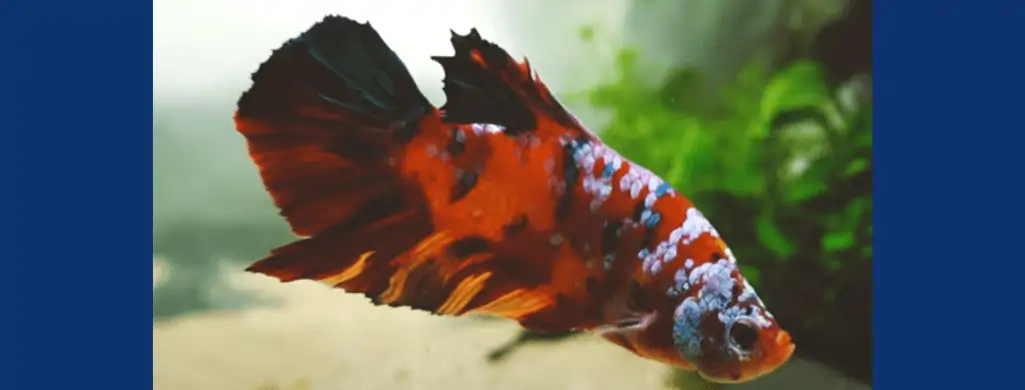
Koi bettas are another variation of marble bettas, but their colors are similar to koi carp.
Traditional colors of koi bettas include red, orange, black, and white.
This color pattern is more common in short-finned plakat bettas.
A different version of the koi betta is the galaxy koi.
Galaxy koi bettas have splotches of blue, red, white, or black in the same pattern as regular koi bettas.
The galaxy koi pattern may be found on the plakat betta, but it is more common in the halfmoon variety.
Like all marble varieties, koi bettas develop their colors over time. The pattern may change during the betta’s life.
#10 Full Mask Betta
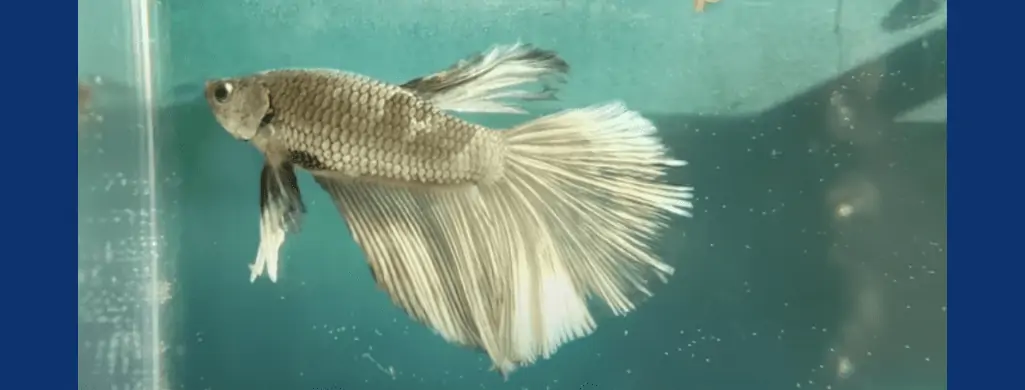
The full mask pattern refers to a betta with the same color on its face as the rest of its body.
Most bettas have a different color on their head, especially those with iridescent scales on their body.
Even the iridescent coloring is spread to the face with full mask bettas.
Blue is the most common color found in full mask bettas.
The tails of full mask bettas are usually the same color as the body, but this is not always the case.
#11 Grizzle Betta
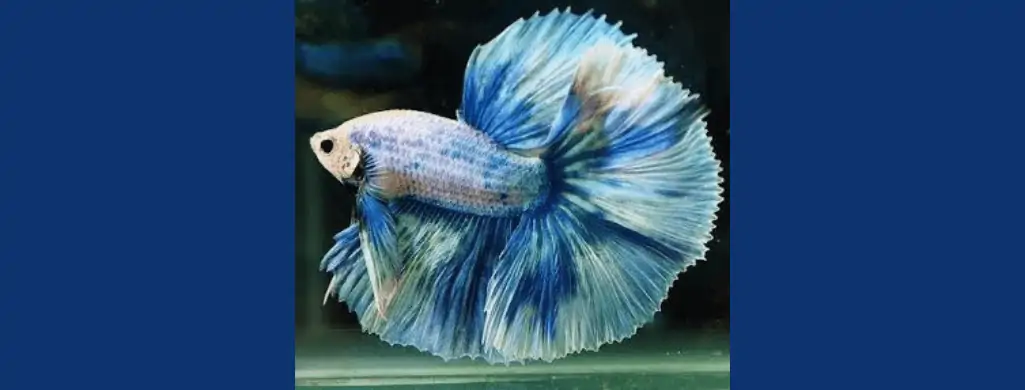
Grizzle bettas are rare, as breeding them is challenging.
A grizzle betta has a pastel or opaque body with random flecks of iridescent coloring.
The fins also have the same grizzle pattern.
There should be two distinct iridescent colors on the body and fins.
The ideal grizzle betta has 50% iridescent coloring and 50% pastel or opaque body coloring.
Grizzle patterning is commonly found in crowntail, plakat, and halfmoon bettas.
The grizzle pattern is a marbling variation, so the betta’s color may change over time.
#12 Wild Type Betta
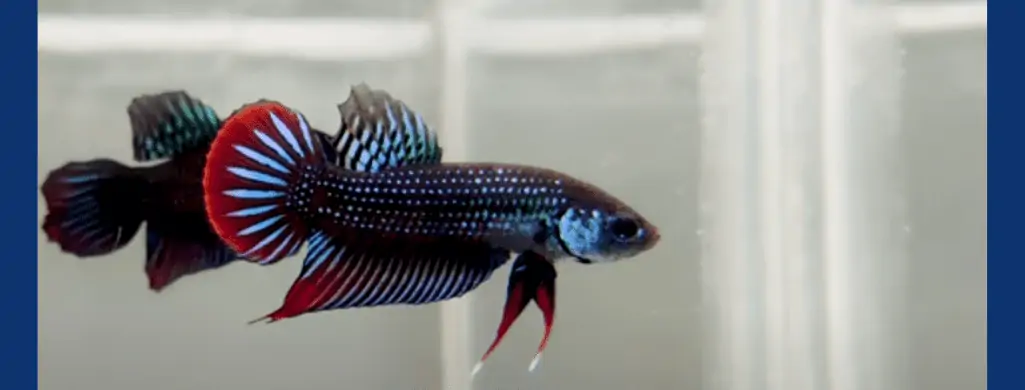
Wild type bettas are the lesser-known types found in the wild. They are closely related to the Betta Splendens but have their own distinct features.
Some wild betta species are less aggressive than captive bettas.
The wild-type bettas have shorter fins and tails than the domestic bettas at the pet store.
The Betta Imbellis are one of the most popular wild-type bettas. They are also known as the peaceful betta or the crescent betta.
Imbellis have a crescent-shaped tail and a rounded dorsal fin. The pectoral and anal fins are longer than other wild-type betta varieties, and they taper down to a point.
Male Imbellis are colorful, with tan bodies and red and turquoise striped fins. The female bettas have more subdued colors than the males.
Another popular wild type of betta is the Betta Albimarginata.
These bettas are primarily orange with black spots on their bodies. The body color fades into the fins before ending with a distinct black stripe.
The fins and tail edges are white, contrasting nicely against the black stripe.
So Many Betta Fish Types!
Understanding bettas’ different tail shapes, colors, and patterns will help you identify their genetics.
Knowing at a glance which bettas are more aggressive is helpful if you are planning a communal tank.
Here are some other types of bettas that aren’t included in the list above:

